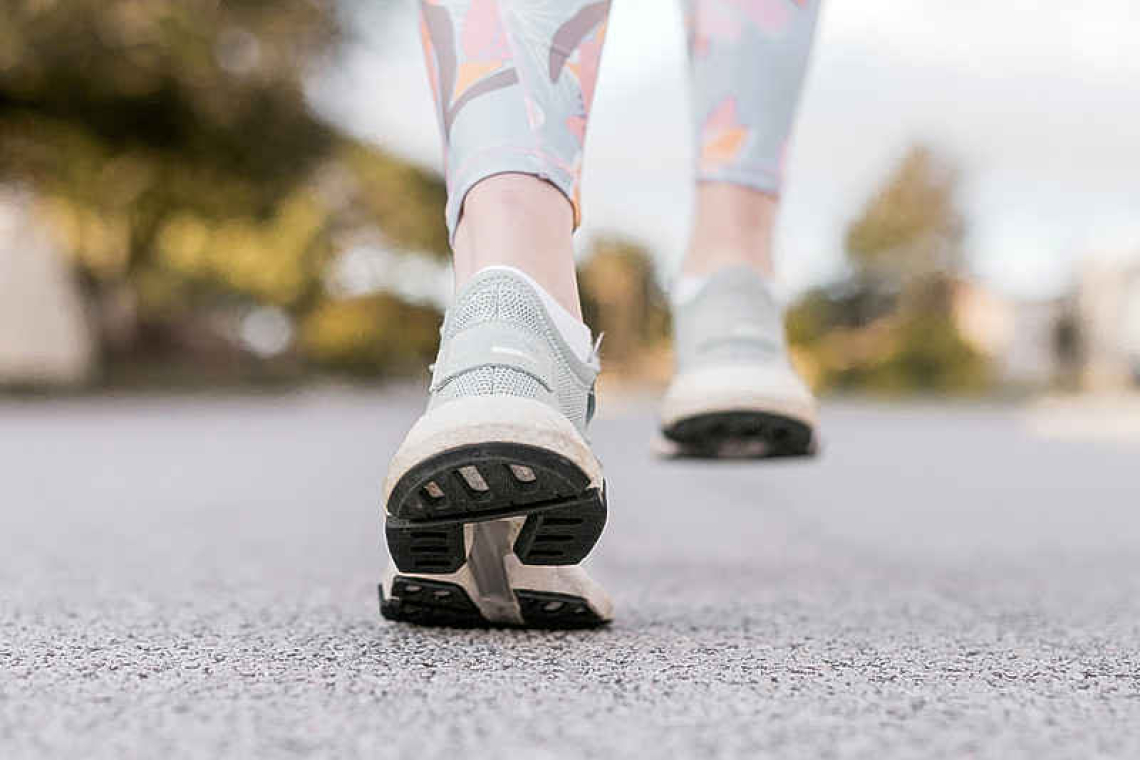By Dr. Colin Michie FRCPCH University of Central Lancashire
Mammals have several ways of getting around. They may walk on their fingernails (hoofs), on toes, or with feet on the ground. We usually walk on two feet – a rare skillset in the animal kingdom – but feet vary. They may appear arched; sometimes they are flat.
Two-legged walking probably evolved about three million years ago, before hominid brains began to enlarge. We share foot-walking with some primates, badgers, wolverines, racoons, bears, standing kangaroos and rodents, but we excel in our use of this locomotion. Our walk makes for great stability, some beauty, but not the greatest speeds.
Nerve circuits in the spine learn how to control our walking sequences, balance and foot dominance when we are infants. In board sports, such as skateboarding, a “goofy” foot position is one in which the left foot leads, although as with handedness, some individuals are ambipedal and can use either foot, and most of us have a dominant right foot.
Ankles and feet provide spring (from our calves) that powers us through each stride; foot arches absorb the forces of our weight when a foot returns to the ground. We have arches from the ankle to the toes and from side-to-side. Foot arches are built by a series of 26 bones and 33 joints in each foot. These are surrounded and supported by cages and nets built from over 100 tendons, ligaments and muscles.
Flat feet or pes planus are normal in toddlers. Infants have less muscle strength, more mobile joints and immature bone structures too. They typically have a wide-based gait, flat feet and often “go over” on their ankles. This eversion, or pronation, resolves with maturity. Some children curiously enjoy tip-toe walking, hardly using their full foot at all. By the age of five to eight, though, most children will have arches in their feet that distribute their weight to all the toes, with a slight emphasis towards the great toe.
Low arches, or what appear to be “flat feet”, are more common in boys, in those who are overweight and in those who have a family history of this problem. Girls tend to have more mobile feet and higher arches. Most low arches do not cause problems to other joints; they do not limit mobility or endurance and do not cause deformity. They will not inhibit your performance on the athletic track and are unlikely to require treatment. Parents often become concerned about flat feet – an embarrassing process of foot shaming. Large numbers of youngsters are given exercises or adjusted footwear that is rarely necessary and arches often become more evident during adolescence.
Feet are subject to more serious problems in very small numbers of children, perhaps one percent of any population. Those with “double joints” tend to have flat feet because of their more lax tendons and ligaments, often linked to genetically abnormal collagen. Hypermobile youngsters will often have many joints that are particularly flexible, for instance their thumbs, elbows or spine. Hypermobility often causes long-term pain and discomfort in the feet and knees, limiting mobility. More rarely complications from cerebral palsy or muscular dystrophy, for instance, can alter arch development, usually more dramatically on just one side.
Problem arches can become more obvious as lifestyles change. For example, many women report a loss of foot arch shape with their first pregnancy. Trauma or inflammatory problems such as arthritis or neurological disorders can lead to changes in arches and gaits. In older people, eversion can stretch the arches and ligaments, causing plantar fasciitis. The concern should be pain: If your feet (or perhaps your knees) hurt, have them checked, perhaps scanned or imaged. Ask for advice.
Checks are directed at excluding complicating problems. Most painful feet, even if they appear flat, do not require medical or surgical approaches. Footwear adjustments, stretching and physiotherapy are valuable. The online selections if these are impressive! It has been recommended to seek a firm sole with a well-fitting upper, often with some degree of ankle support as a lightweight piece of exoskeleton. In rare situations, surgery using arthroereisis, a method to support the arch joints with an implant, can be carried out, employing careful reconstruction techniques.
Foot arches notoriously attracted the laser focus of recruiters in many military and police forces in the last century. By the Second World War, flat feet were a reason not to enlist men in many countries. For instance, Einstein was not recruited to Swiss army as a young man because of his lack of arches. These restrictions melted into history once it was realised that most flat feet are normal variants of the human condition. It is likely that all of us could, and should, indulge in more walking – this is such a valuable physical activity for our mental and physical health. Foot shapes should not hold us back!
Useful resources
https://www.nhs.uk/conditions/flat-feet/
https://rcpod.org.uk/common-foot-problems/flat-foot-management
Dr. Colin Michie is currently the Associate Dean for Research and Knowledge Exchange at the School of Medicine in the University of Central Lancashire. He specializes in paediatrics, nutrition, and immunology. Michie has worked in the UK, southern Africa and Gaza as a paediatrician and educator and was the associate Academic Dean for the American University of the Caribbean Medical School in Sint Maarten a few years ago.







